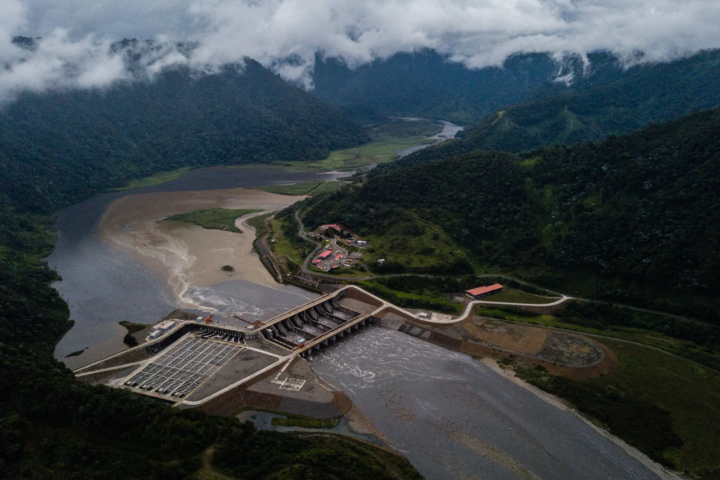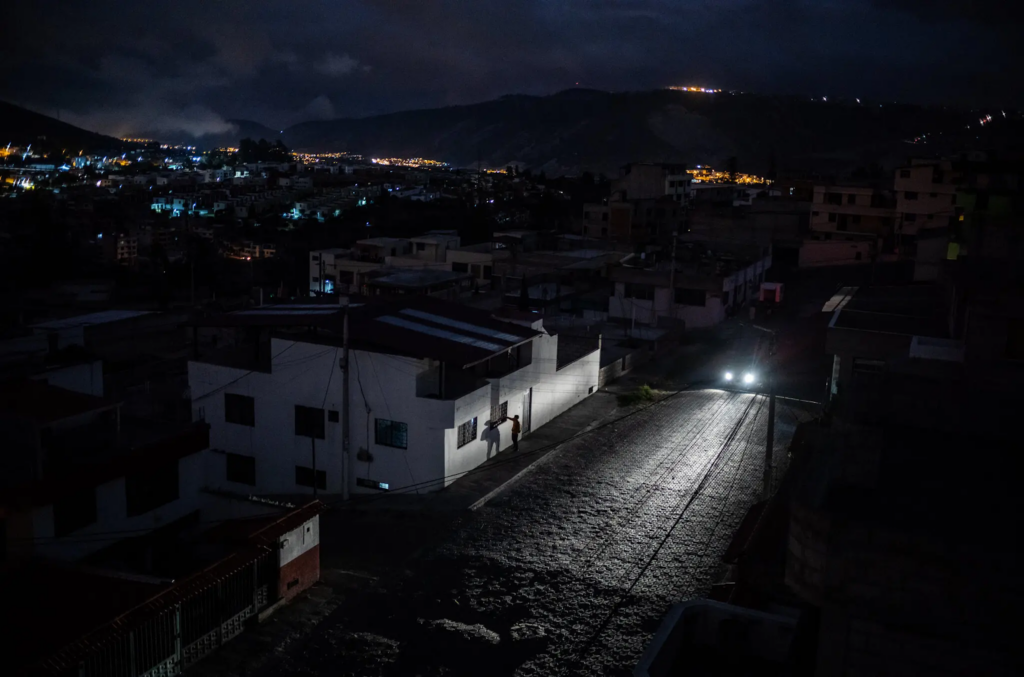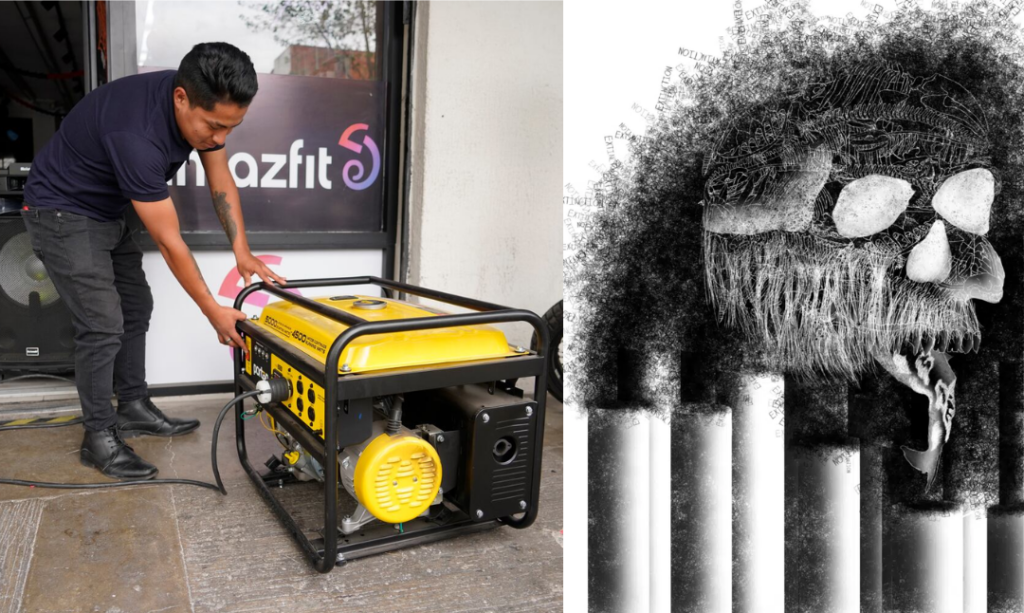
What Do You Mean the Rivers Went Dry?: Why “Sustainable” Isn’t Enough
February 28, 2025By Rafael Bonilla Abad, 2025 Future Blue Youth Council member
Cover photo by The New York Times
It’s only when you’ve spent the past five hours staring at the unmoving fan on your ceiling, melting into the cool, porcelain-tiled floor, and there’s still an hour left until the electricity comes back that you really appreciate the godsend that electricity is. But how did I get here?
Ecuador is a small country in South America (home to the Galápagos Islands if you know them) and is unique in its geography since it has four distinct regions: the tropical coast, the Andes mountain region, the Amazon rainforest, and an Insular region. Ecuador is often considered a natural paradise and is one of the most biodiverse countries by square feet; it’s this ease of access to natural resources that has allowed Ecuador to rely on hydropower for 72% of its electricity production (El Universo). Hooray, sustainability! But wait… as the slithery hands of climate change reach ever further, there is trouble even in paradise. In 2024, a severe drought hit South America which led Ecuador’s hydropower stations to run dry, literally. The other problem? With Ecuador being the geographical diva that it is, it’s extremely hard to implement other sustainable energy sources other than hydropower. The consequence was up to 14 hours a day of scheduled power outages nationwide.
 The New York Times, “The Rivers Run Dry and the Lights Go Out: A Warming Nation’s Doom Loop”
The New York Times, “The Rivers Run Dry and the Lights Go Out: A Warming Nation’s Doom Loop”
Electricity is about as important as water in our modern world, so what do you do when you don’t have it for 14 hours a day? Well, we counted the minutes while we stared at our ceilings. The outages were especially insufferable on the coast where temperatures can reach up to 38°C (100.4°F) with a humidity of 80%. Add on top of that the fact that Ecuador sits atop the equator (fitting name, I know), which means that the sun is basically out to get you. This, however, is the least of the problems. Businesses stagnated, schools became glorified waiting rooms, and even hospitals went dark – which is its own can of worms. Reports show that 50% of small and medium businesses were severely affected by the crisis and another 47% were moderately affected (El Universo). The overall effect on the economy is estimated at 1.5% of Ecuador’s GDP (El Universo). What’s scary, though, is the realization that the foundation we’ve built our life upon can come undone in a blink of an eye unless something changes.
Things did indeed change, just not for the better. Whenever something goes wrong, humans find a way to fix it and this was no exception. Amongst the chaos and uncertainty of how long this crisis would last, one piece of machinery grew a loud following: the diesel generator. Suddenly, quiet neighbourhoods were filled with the monstrous roar of this machine, and the air became dirty from its fumes. The diesel generator is everything that shouldn’t have happened. Not only does it destroy the environment, but it’s also expensive and highly inefficient. People started trading their health and the sanity of others for being able to turn on a mere lightbulb. It was unbearable. Hospitals flooded with people who had developed tinnitus or respiratory issues from exposure to generators – often not even their own (Ecuavisa). Even when you didn’t get to the point of having to go to the hospital, it still affected us all in more ways than one. Although it’s hard to find the number of diesel generator users, the number of imports can be used as a stand-in. In August 2024 (the first month of the crisis), generator imports grew 425% from August 2023 (El Comercio). The real tragedy, however, is that the government subsidised generators and gave compensation to those that used them, making generators seem like the smart thing to do. Spoiler: it wasn’t; it was thickheaded of you (shoutout to my next-door neighbors, love y’all).
 Left: “Apagones afectaron ‘severamente’ al 50 % de las pequeñas y medianas empresas, según estudio” El Universo; Right: “Decay” by Kamau Nganga
Left: “Apagones afectaron ‘severamente’ al 50 % de las pequeñas y medianas empresas, según estudio” El Universo; Right: “Decay” by Kamau Nganga
While diesel generators were the Marvel Blockbuster equivalent of solutions, there was another one that gained a cult following. While most businesses were crashing, this one couldn’t keep up with the demand anymore. Solar panels were the weird but smart thing to do. My family, being slightly unhinged, went down this path, and it’s the best thing we could have done. Diesel generators are selfish and exorbitantly expensive – $500 to $1000 for a small generator + 6.25 gallons of diesel for every hour it’s turned on (El Comercio). On the other hand, solar panels are sustainable and cheaper in the long run. Before this crisis, I’d never even thought that installing solar panels at home was an option, but now I see that it’s something we should have started doing a long time ago.
There are a few distinct benefits that solar panels for home use have. First, they’re sustainable, meaning that they help you reduce your carbon footprint and avoid diesel generators if they use those where you live. Second, they’re (sorta) cheap; the initial investment can be high, especially if you decide to install a battery, but the benefit is that you will be passively generating electricity all day long so your bill will go down. Also, some countries, like Ecuador, allow you to sell your surplus electricity, making it even cheaper. Hooray, money! This also has another side to it: if enough people install solar panels and sell the surplus, the country could reduce the amount of electricity it needs to produce and therefore its environmental impact as well. Third, you’re less reliant on the grid; you might think that an energy crisis like the one we lived through in Ecuador is something that could never happen to you, but I thought the same way too.
This is a story of the consequences of putting all your eggs in one basket, even if it was the ideal basket, and how the masses can be led down the wrong path. Solar panels for home use may sound crazy in a developing country, but I think it has potential. For the longest time, we’ve all heard the same story of needing to adopt sustainable alternatives, but that story isn’t complete. Ecuador did that. The problem is that, with climate change, all our systems must be sustainable and robust. Or else, when the system is inevitably struck by climate change, our progress will be undone. The hydropower stations are once again full here – at least temporarily. However, Ecuador is now adopting more fossil fuel-based electricity sources, and I can’t help wondering: what if instead of subsidising diesel generators, it had subsidised solar panels?
References
Carchi Lazo, C. (2024) Así va La Generación en Ecuador: Hidroeléctricas aportan solo 49 % y Otras Fuentes Intentan cubrir demanda nacional, El Universo. https://www.eluniverso.com/noticias/economia/hidroelectricas-produccion-ecuador-cortes-de-luz-mazar-paute-coca-codo-nota/
Silva Cruz, V. (2025, February 12). Apagones afectaron ‘severamente’ al 50 % de las pequeñas y medianas empresas, según estudio. El Universo. https://www.eluniverso.com/noticias/economia/apagones-pymes-crisis-energetica-pequenas-y-mediadas-empresas-inseguridad-nota/
Silva Cruz, V. (2024, December 19). Finanzas estima que los apagones habrían afectado a la economía hasta en 1,5 % del PIB. El Universo. https://www.eluniverso.com/noticias/economia/apagones-perdidas-economia-cortes-de-luz-pib-juan-carlos-vega-nota/
Televistazo. (2024, November 8). Los generadores eléctricos causan molestia y ya son motivo de consultas médicas. Ecuavisa. https://www.ecuavisa.com/noticias/ecuador/generadores-electricos-causan-molestia-auditvos-consultas-medicas-XI8280617
Turkewitz, J., Cabrera, J. M. L., & Rios, F. (2024, December 30). Hydropower was Ecuador’s answer to climate change. Until the drought hit. The New York Times. https://www.nytimes.com/2024/12/30/world/americas/ecuador-hydropower-drought.html
